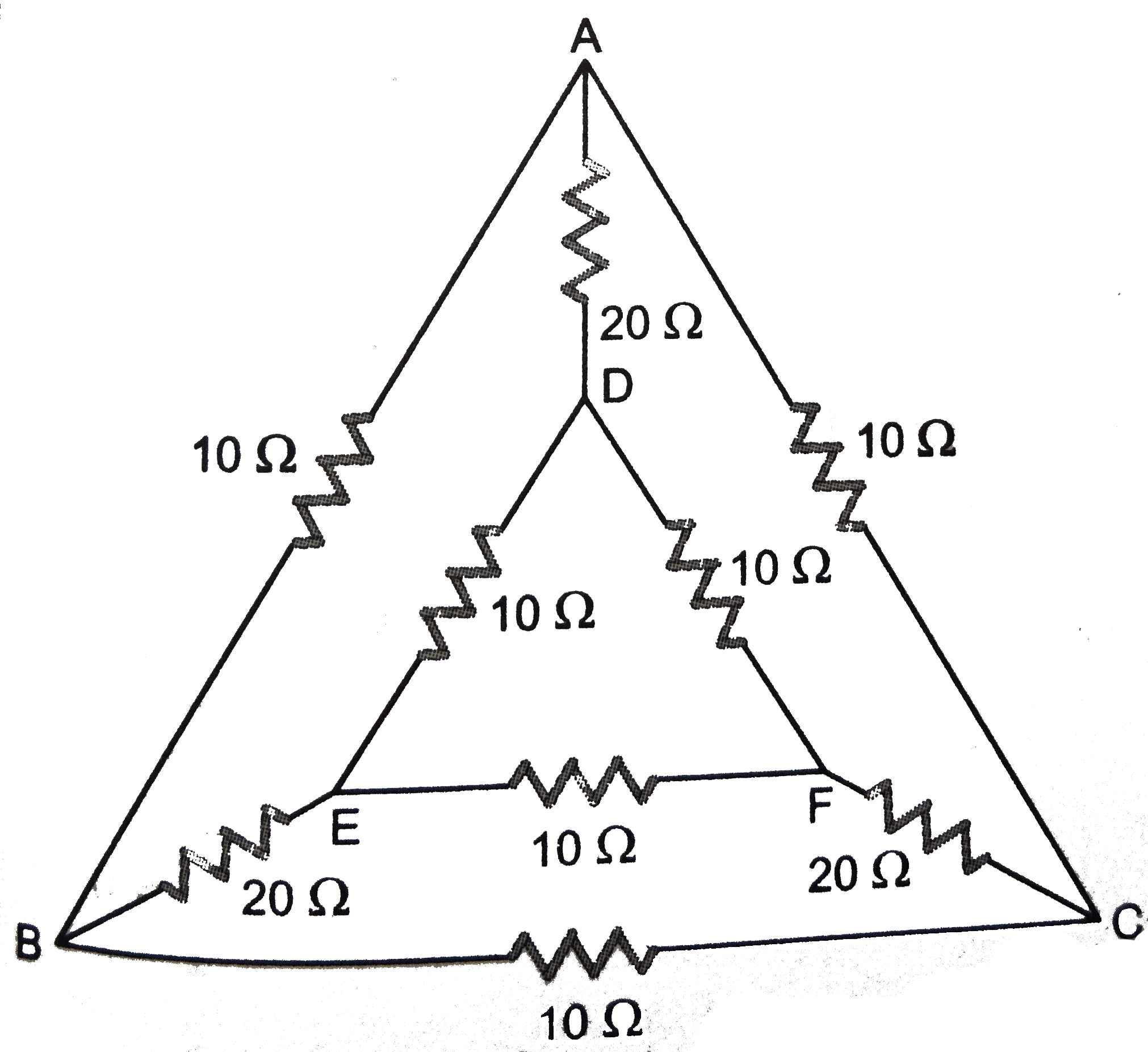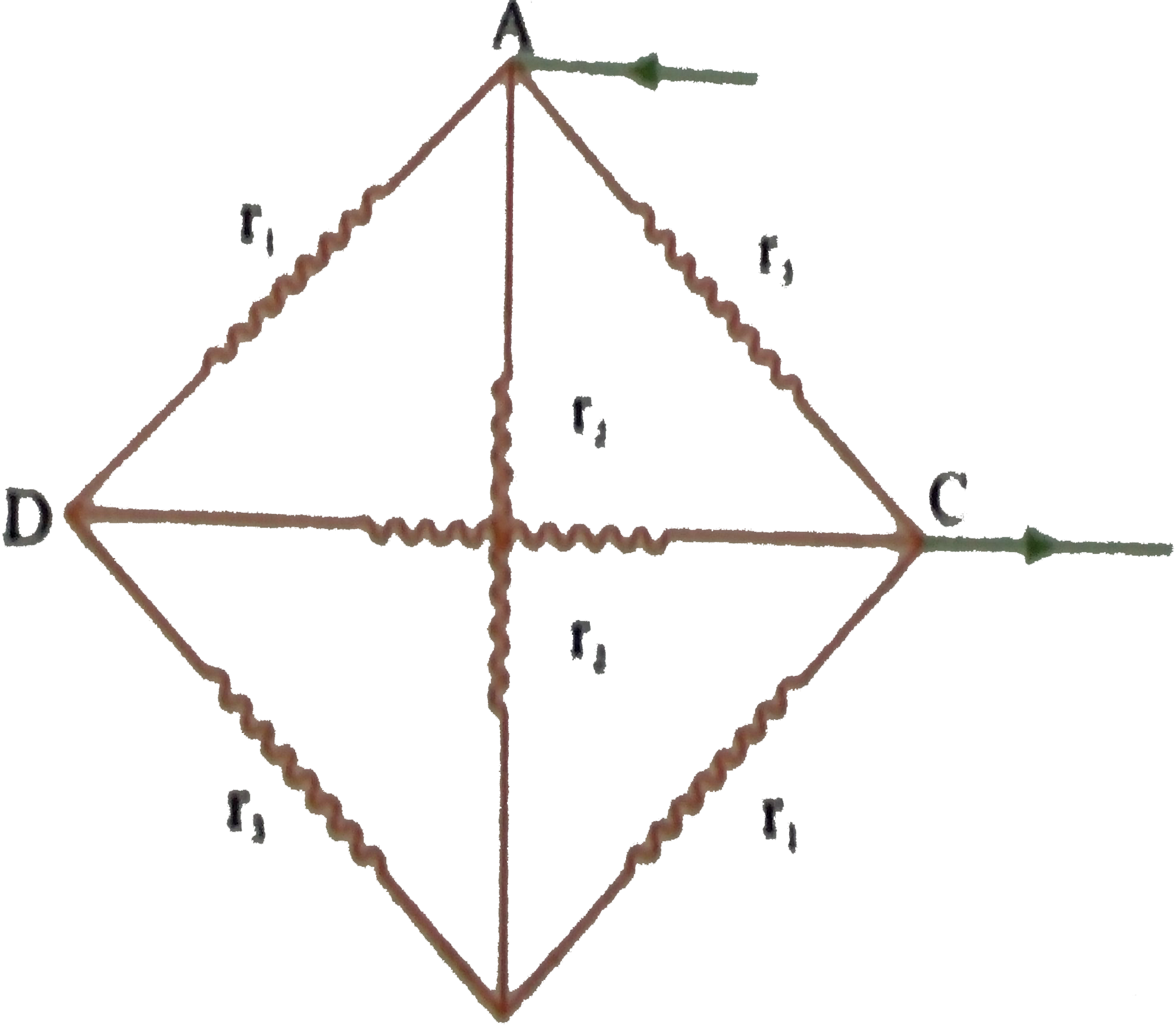
Six resistors are connected so as to form the edges of a tetrahedron ABCD, the resistances of opposite pairs being equal. (Note that the resistors AB and CD do not touch each other) find the equivalent resistance between A and C.
A
B
C
D
Text Solution
The correct Answer is:A
|
Topper's Solved these Questions
- CURRENT ELECTRICITYBOOK - NARAYNACHAPTER - CURRENT ELECTRICITYEXERCISE - Level 5
42 Videos
- COMMUNICATION SYSTEMBOOK - NARAYNACHAPTER - COMMUNICATION SYSTEMEXERCISE - Level-II(H.W)
25 Videos
- DUAL NATURE OF RADIATION AND MATTERBOOK - NARAYNACHAPTER - DUAL NATURE OF RADIATION AND MATTEREXERCISE - ASSERTION AND REASON
15 Videos
Similar Questions
Knowledge Check
Each of the resistor shown in fig. has resistance R. Find the equivalent resistance between A and B
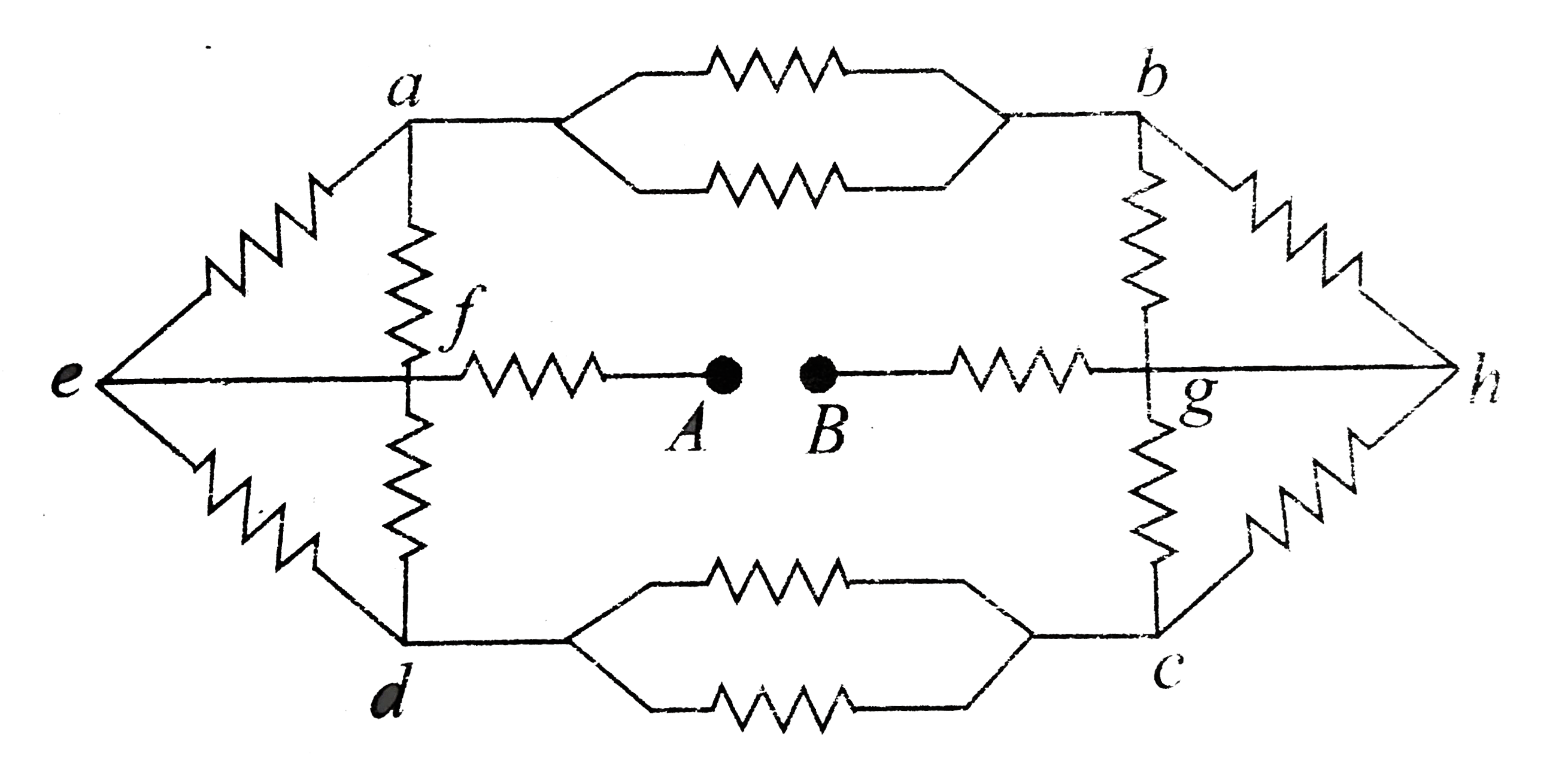 A7R4B5R4C9R4D11R4
A7R4B5R4C9R4D11R4Five resistors are connected as shown in the diagram. The equivalent resistance between A and B is
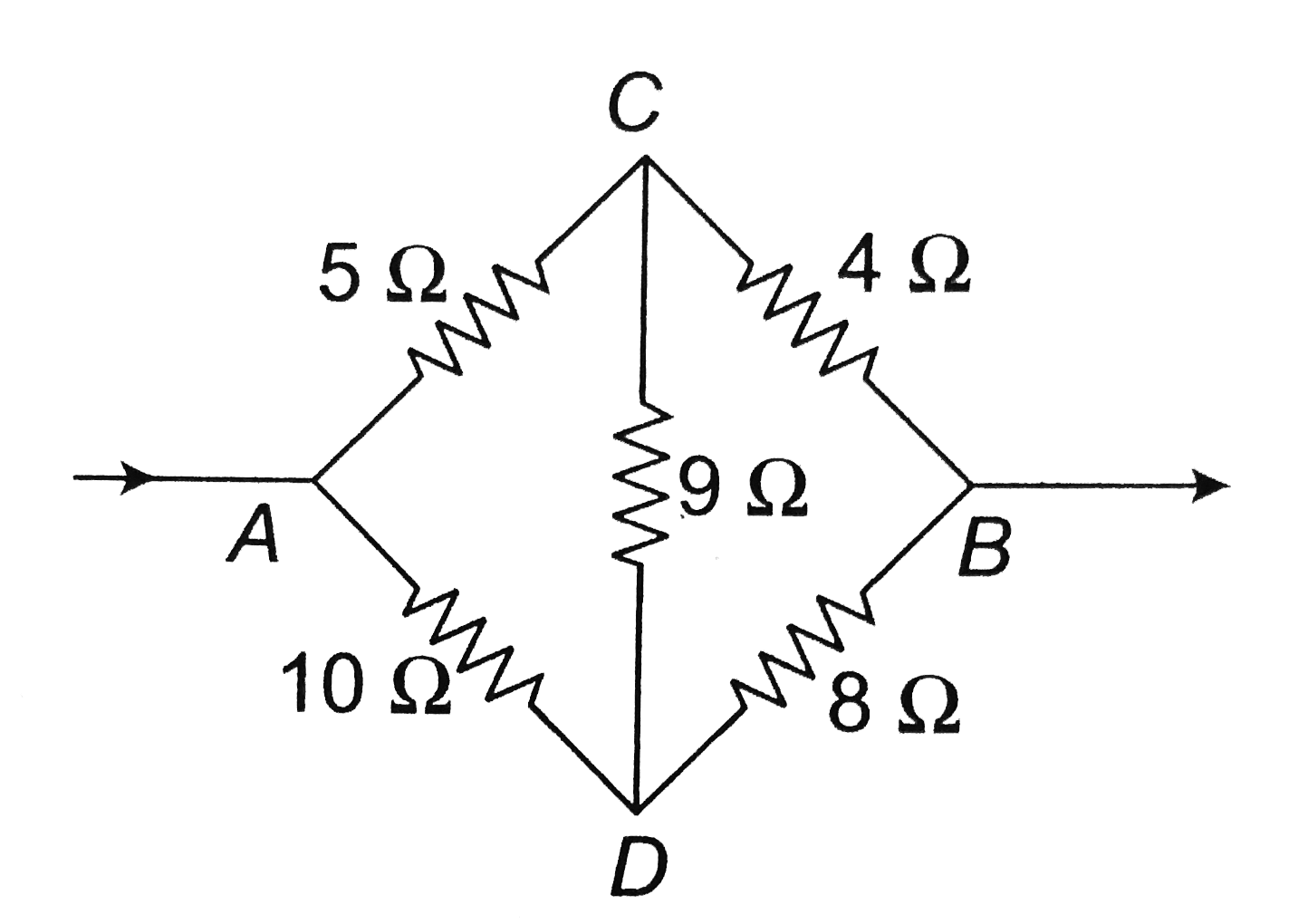 A6ohmB9ohmC12ohmD15ohm
A6ohmB9ohmC12ohmD15ohmSix resistors each of 10 ohm are connected shown. The equivalent resistance between points X and Y is
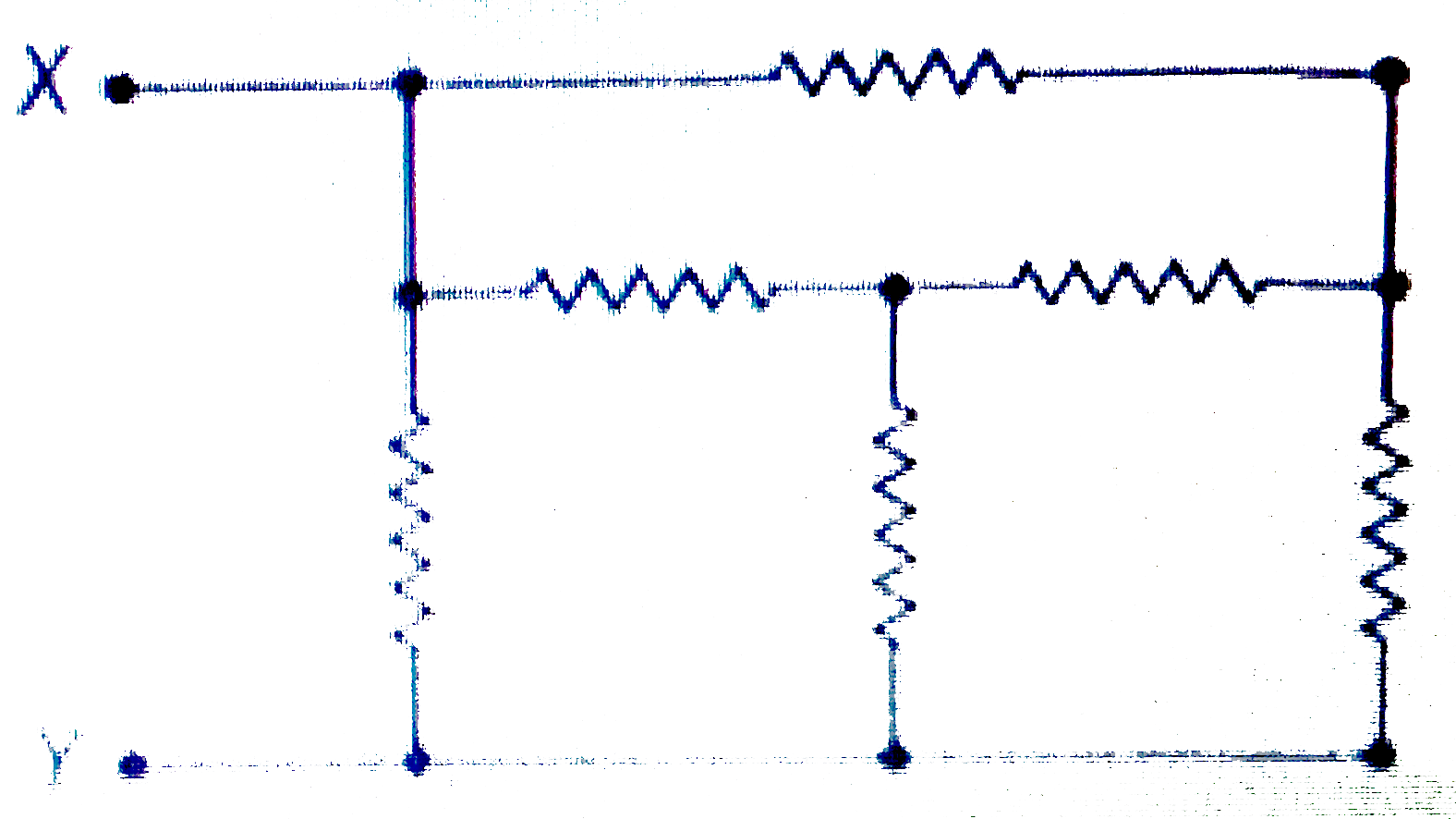 A20ΩB5ΩC25/3ΩD10Ω
A20ΩB5ΩC25/3ΩD10Ω
Six resistors each of 10 ohm are connected shown. The equivalent resistance between points X and Y is

View SolutionA number of resistors are connected as shown in the figure. The equivalent resistance between A and B is

View SolutionIn the adjoining network of resistors each is of resistance rΩ. Find the equivalent resistance between A and B.
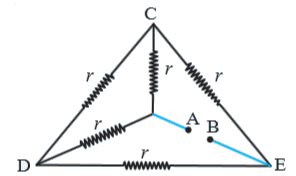
View SolutionIn the adjoining network of resistors each is of resistance rΩ. Find the equivalent resistance between A and B.

View SolutionA number of resistors are connected as shown in the figure. The equivalent resistance between A and B is

View Solution

